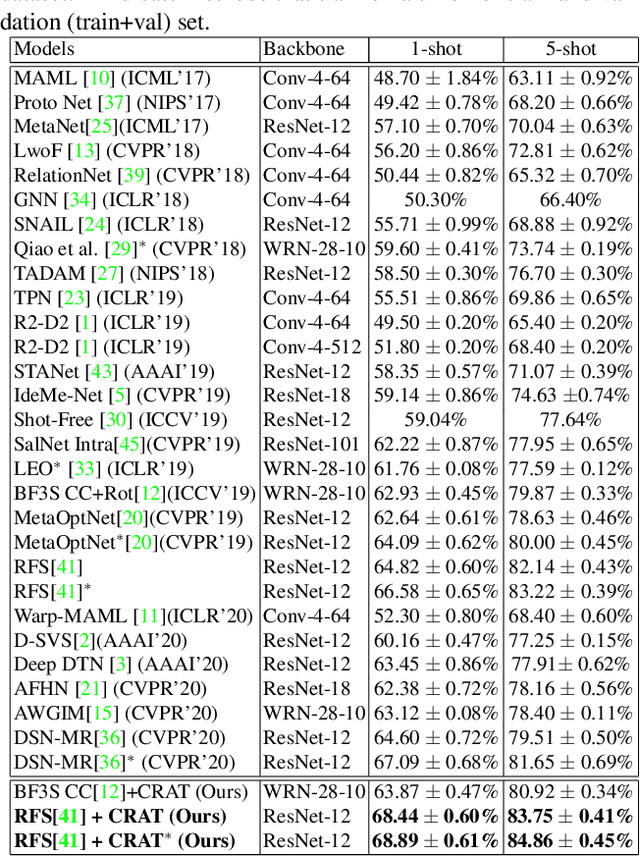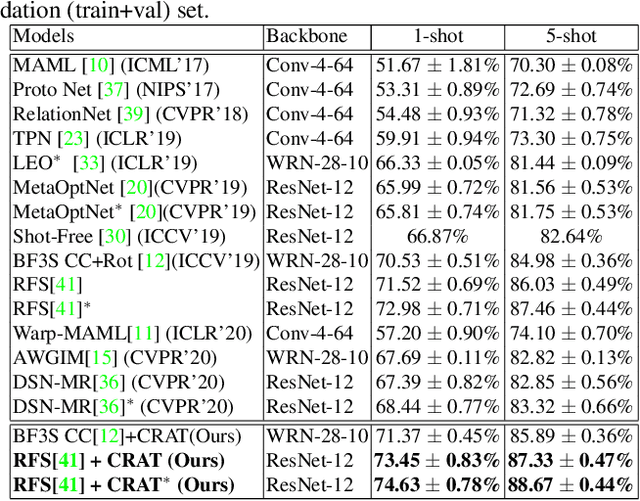Improving Few-Shot Learning using Composite Rotation based Auxiliary Task
Paper and Code
Jun 29, 2020



In this paper, we propose an approach to improve few-shot classification performance using a composite rotation based auxiliary task. Few-shot classification methods aim to produce neural networks that perform well for classes with a large number of training samples and classes with less number of training samples. They employ techniques to enable the network to produce highly discriminative features that are also very generic. Generally, the better the quality and generic-nature of the features produced by the network, the better is the performance of the network on few-shot learning. Our approach aims to train networks to produce such features by using a self-supervised auxiliary task. Our proposed composite rotation based auxiliary task performs rotation at two levels, i.e., rotation of patches inside the image (inner rotation) and rotation of the whole image (outer rotation) and assigns one out of 16 rotation classes to the modified image. We then simultaneously train for the composite rotation prediction task along with the original classification task, which forces the network to learn high-quality generic features that help improve the few-shot classification performance. We experimentally show that our approach performs better than existing few-shot learning methods on multiple benchmark datasets.
 Add to Chrome
Add to Chrome Add to Firefox
Add to Firefox Add to Edge
Add to Edge